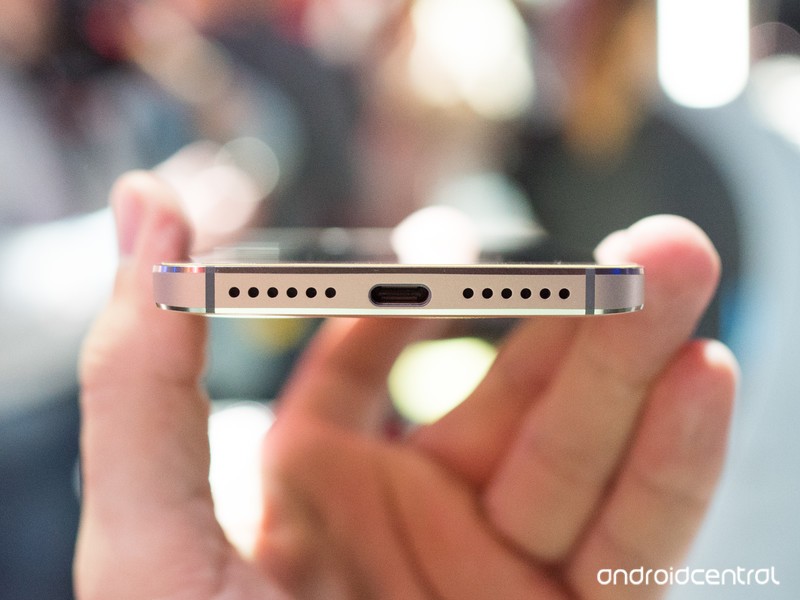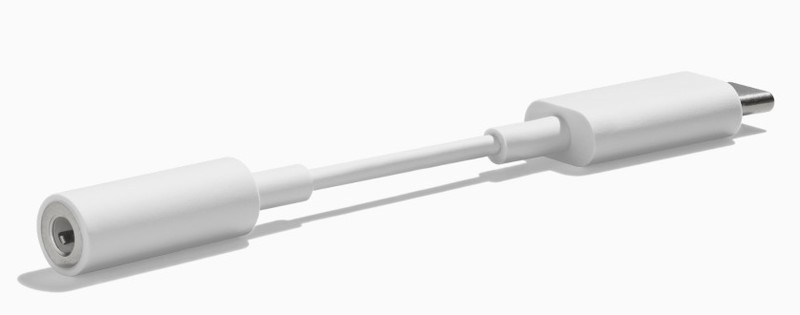Based on materials from androidcentral.com
Is the switch to USB-C good or bad? Why is it happening and what does it mean for those who like to listen to music from their mobile device?

It's possible that the next smartphone you buy will support USB-C audio, even if it retains the 'regular' 3.5mm jack. Which means more headphones with a USB-C cable are coming soon, because that's how it works: add support for something and companies will start making it. However, using the new connector for audio raises a lot of doubts and questions, how this experience will differ from what we have had over the years.
The port is new, the details are the same

Any type of audio content can be played on our smartphones thanks to the well-coordinated work of a number of special details. Moving from 3.5mm to USB-C will not change anything in this regard. However, the details themselves can change dramatically.
In order to turn files on your smartphone into sound, you need a D / A converter, amplifier, and speaker (s). Speakers vibrate to create a wave that affects our eardrums, and the work of their moving parts is possible due to electromagnetism. This wave corresponds to what is called an analog signal, and the varieties of this signal are sounds of different tones. So, the wave nature of the signal makes the speaker vibrate, this vibration generates waves that are sent to our eardrums, which, in turn, vibrate in our head, producing sound. If we ignore the biological component of the question, everything really happens just like that. If you take a look at a graph of analog sound fluctuations and hear the sounds themselves, you can see perfectly how these things are related.
The files on your smartphone or files that are transferred over the Internet are digital in nature. This means it's just a bunch of ones and zeros put together so that the computer can read them and know what to do with them. Digital files themselves do not have any wave nature that would allow speakers to produce sound. Therefore, we need something to convert one to the other.
Complex algorithms are used to take recorded audio in analog format, convert it to a digital format, such as an .mp3 file, for storage on a computer, and then convert it back to analog format for playback. The data must go to a DAC to convert it to the desired waveform and then to an amplifier that makes the wave strong enough to work in headphones. Scientists and engineers use a variety of tricks to 'create sound', but the process described is necessary for every phone, portable audio player, and every set of speakers.
A smartphone, for example, some LG V30, has a very good DAC and amplifier, as well as a 3.5 mm audio jack. The application plays the file, the DAC converts it to an analog form, the amplifier amplifies the signal, and all this is transmitted through the 3.5 mm audio jack to the headphones that you plugged into the device. Any smartphone with a 3.5mm jack performs exactly the same, no matter how premium it is in terms of audio. But a smartphone that uses a USB port for audio may work differently.

Let's try to explain this with an example Bluetooth. You do not need to physically connect headphones to something Bluetooth, so the circuit is organized differently, although all the same elements are involved in it. Your Bluetooth headphones have their own built-in DAC and amplifier. The digital file is transferred from your smartphone, and all transformations take place right on your head. At first glance, it looks difficult, but in reality – not very much. The exact same process takes place, the only difference is where its components are located. However, let's move on to USB.
There are two ways to send audio over the USB port, you guessed it – digital and analog. Analog audio can be converted in your smartphone's built-in DAC and amplifier, and then sent through the port to passive headphones or an adapter. For this to happen, the device must support what is called analog audio operation, in which case the headphone or adapter is just a signal conductor.
If you are using powered headphones or an adapter, the audio signal that is sent through the USB port remains digital. This means that the DAC and amplifier are inside the headphones or dongle and the conversion takes place there and not in the smartphone.
This can cause certain problems. You need to make sure you are using the right combination of gadgets. If you have passive headphones or an adapter, your smartphone must support analog audio, and many do not. And the catch is that most of the dongles, adapters and headphones are not labeled in any way for their 'activity' or 'passivity', nowhere is it indicated how they are made.
The Pixel 2 has a built-in DAC in its Qualcomm Snapdragon 835 chipset, but does not support analog audio. This means that you will need active headphones or an adapter such as the included dongle. Ditto with the HTC U11 and Essential Phone, and the only USB-enabled smartphone that claimed analog audio was the LeEco Le Pro3. However, they should all support active headphones or an adapter.
And one more thing: not all USB audio accessories work with all smartphones, since not all manufacturers use several additional USB-C wires to implement additional functions, as HTC did in the headphones for the U11 to provide active noise cancellation.
So before you buy any USB-C headphones or adapter, make sure it works with your smartphone.
Is USB-C better or not?

The answer is yes, but also no. Real sound does not improve simply by replacing the port. As mentioned above, you still need all the same parts, and manufacturers are free to choose among them both top-end and budget ones. USB-C doesn't change anything except the connection method.
But there is also some benefit. The USB Type-C 1.0 standard was presented at the USB-IF (USB Implementers Forum) in 2014 along with the USB 3.1 standard specifications. Although optional, USB-C has a lot of connectivity and connectivity features. The USB-C port can simultaneously support the following functions:
- Analog audio mode. For passive audio or audio transmission.
- Alternative modes. Several additional wires are required for the USB connection, allowing direct transfer to the host device for alternative data transfer protocols. For 2016 includes Thunderbolt, DisplayPort, Mobile High-Definition Link (MHL) and HDMI protocols.
- Billboard Device Class. Responsible for the transfer of data about alternative connections or simply for the transfer of information about connected devices (on both sides).
- Standard Audi o Device Class 3. Transmits analog or digital (or both) audio information through the port.
- USB Power Delivery. Not only provides USB fast charging, but also supports DRP (Dual Role Power) to quickly charge your smartphone and provide power to the connected device at the same time.
USB Type-C specifications do not require these features, but they are supported. This means that with a USB-C port in your smartphone, you can do much more than just listen to music or charge it – in case the company wants to implement any of these additional modes, of course. Some of them look cool: HDMI or DisplayPort means you can connect your phone to an audio system and enjoy high-quality sound and images on the big screen. And charge it, and send data, and charge another USB-C accessory with the right cable – all at the same time.
Android along with Chrome, Windows, macOS and Linux fully support the USB Type-C standard. And while the sound doesn't necessarily improve, there may be some very useful features available.
He is already here

It looks like a number of smartphones, such as the V-series from LG, will keep the 3.5mm jack soon. This is good news for people who have old standard audio accessories and want their smartphone to act like a cool audio player. However, the transition to USB-C in audio has already taken place. And obviously all wearable (and possibly stand alone) audio devices will use USB-C. And all because it is beneficial to the companies that produce our favorite gadgets.
By ditching 3.5mm, you no longer have to make your smartphones as thick as they used to, plus you gain a few square centimeters on the board to accommodate other components. With the advancement of artificial intelligence and machine learning on the board, space is required for many small parts, and now that space can be won. The headphone jack itself is not particularly expensive (although every cent plays a role), but if the company provides the device with an analog audio mode in USB-C connection, then it will not need to design, manufacture and implement any signal amplifier. This can add up to significant savings when manufacturing smartphones from start to finish.
Some of us will miss the 3.5 mm jack. Someone is attached to their favorite headphones much more than to a player or smartphone. But users will ultimately benefit if companies choose to implement full USB-C. And a smarter, faster connection is definitely a good thing.
